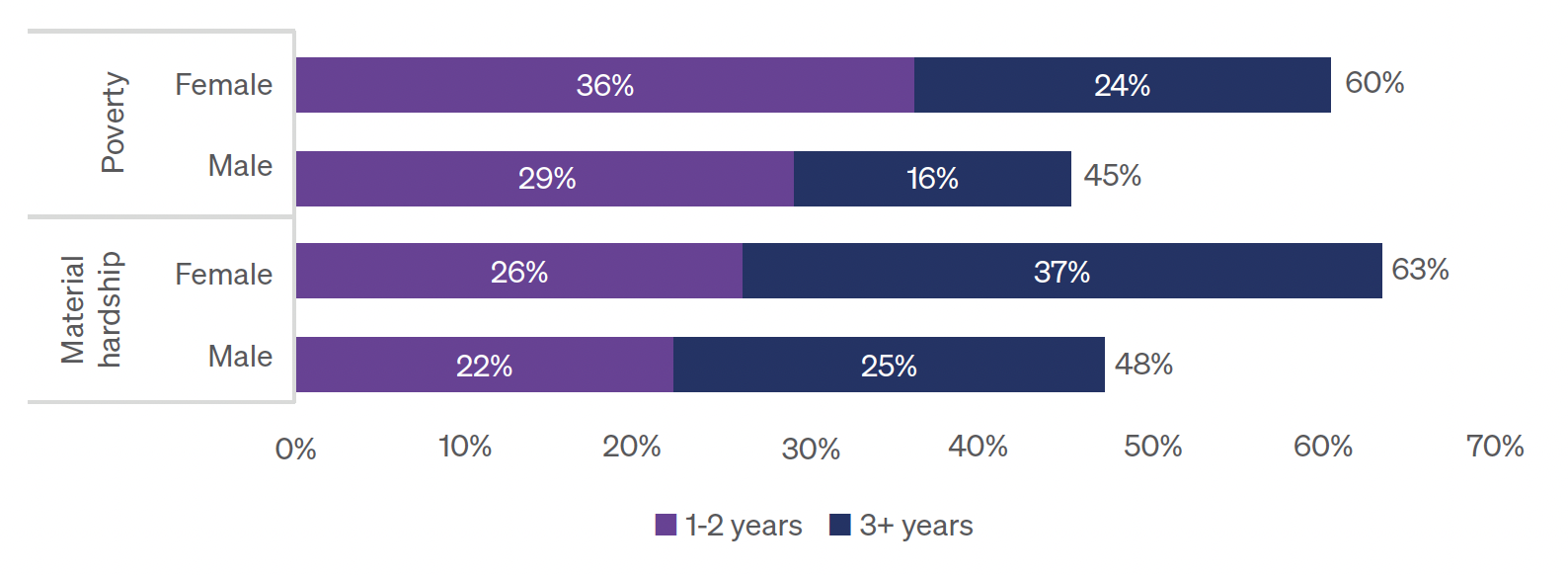March 2024
Portrait of Disadvantage Among Women in New York City in 2022
This special portrait report provides a glimpse at poverty and disadvantage through a gender lens, focusing on the experience of low-income female New Yorkers
Contributors: Poverty Tracker Research Group at Columbia University
Issues Areas: Financial Security, Health & Well-Being, Households With Children, Special Reports
This Women’s History Month, we’re taking a look at poverty in New York City through a gender lens with a special report focused on how poverty impacted NYC women in 2022, specifically in the areas of employment, health, and child care access. Poverty Tracker data finds that, in 2022:
- Female New Yorkers were more likely than males to experience poverty (23% vs. 18%), material hardships (32% vs. 25%), and health problems (25% vs. 20%).
- Black and Latina females were almost three times more likely than white females to work in low-wage jobs (40% and 39% vs. 15%).
- Child care responsibilities disproportionately affected female New Yorkers, who were much more likely than males to quit a job (20% vs. 3%), turn down a job (35% vs. 8%), or refuse a promotion (18% vs. 3%) due to child care issues.
- Disadvantage was also more persistent for females New Yorkers; across a 5-year period, 60% of women were in poverty for at least one year versus 45% of men, and 24% of women were in poverty for 3 or more years versus 16% of men. Gaps were similar for experiences of material hardship over a 5-year period.

Source: Findings on the rates of disadvantage among females and males are drawn from annual Poverty Tracker data, using the study’s second through fifth cohorts and a three-year average of 2018, 2019, and 2022 data. Findings on the persistence of disadvantages are drawn using longitudinal Poverty Tracker data from the second cohort’s baseline to 60-month surveys.